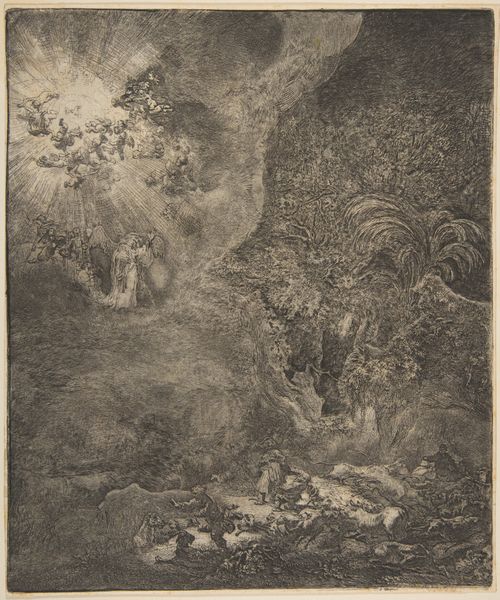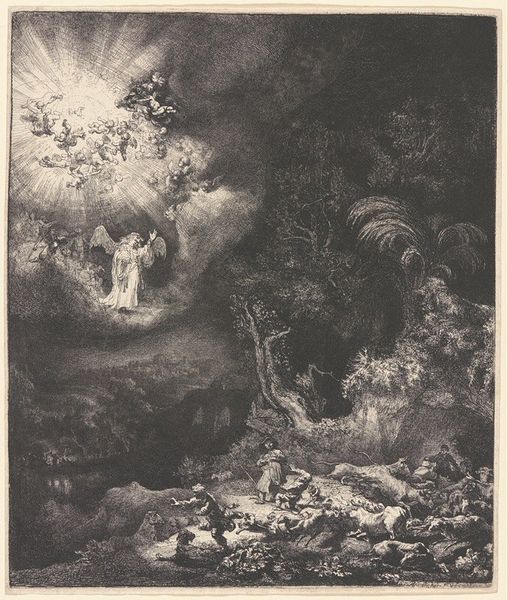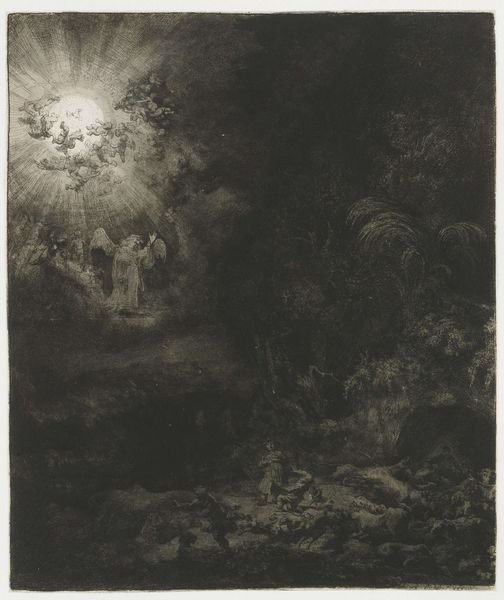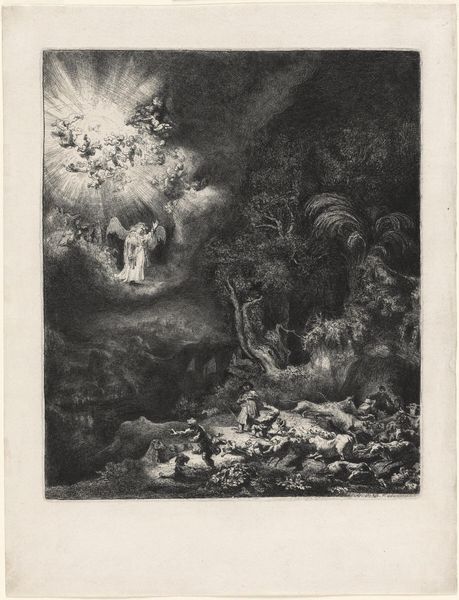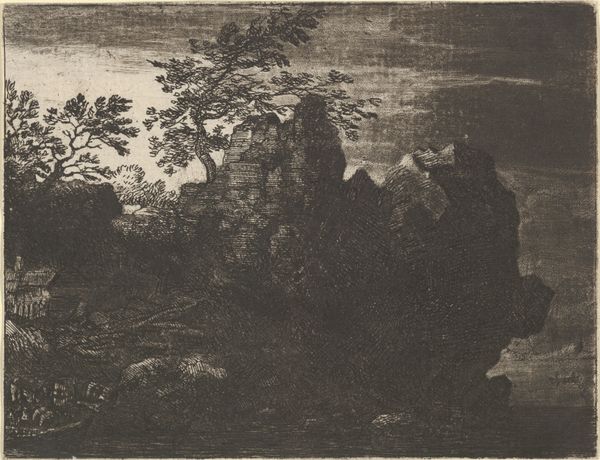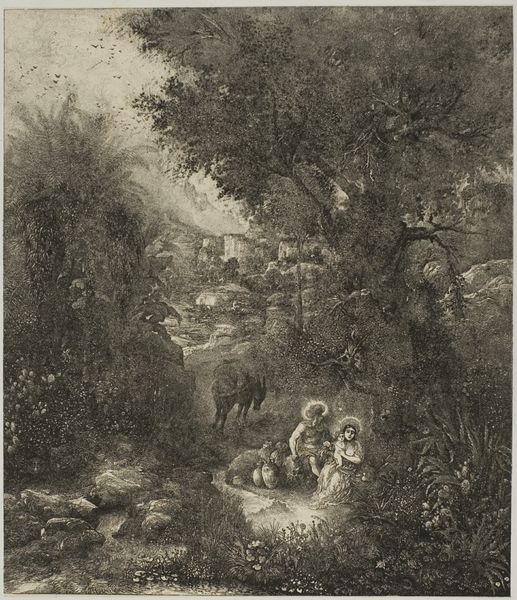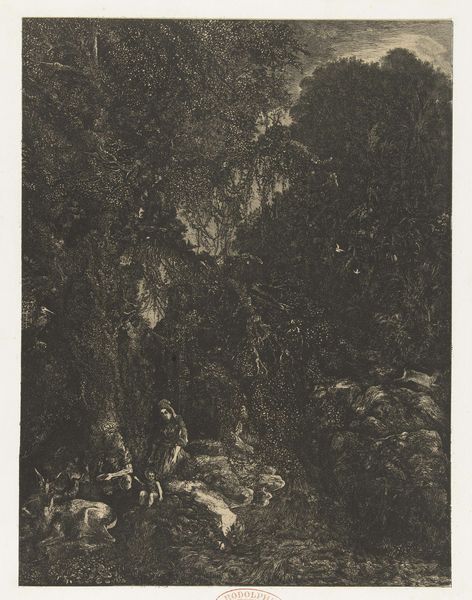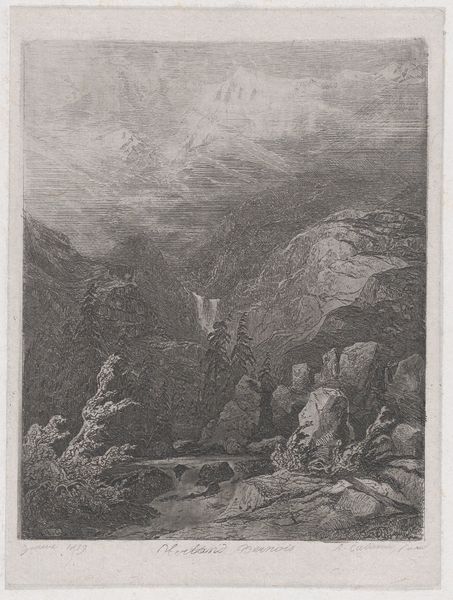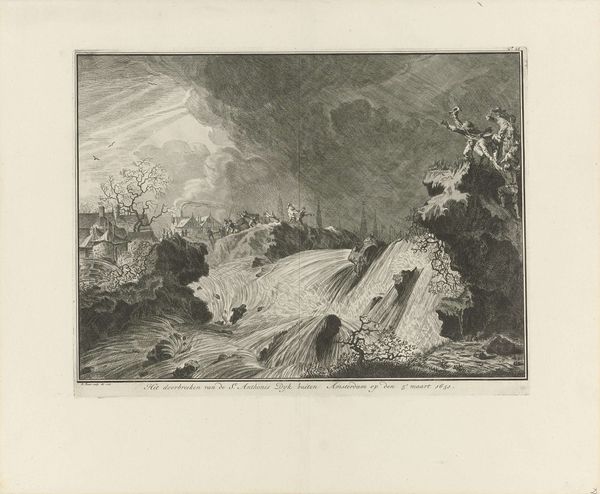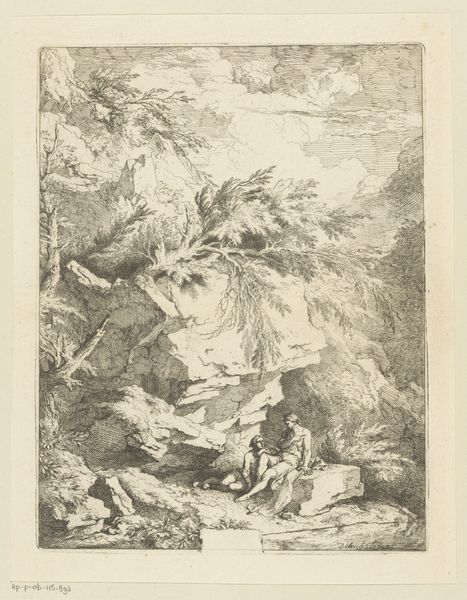
print, etching
#
narrative-art
#
baroque
# print
#
etching
#
landscape
#
figuration
Dimensions: height 258 mm, width 218 mm
Copyright: Rijks Museum: Open Domain
Curator: "The Angel Appearing to the Shepherds," etched by Rembrandt van Rijn in 1634 and currently held at the Rijksmuseum. Editor: It strikes me as rather unsettling; the contrast between the illuminated sky and the dark, tangled landscape is quite dramatic. Curator: The tangible quality of light in this etching is remarkable. Rembrandt meticulously layered the etching lines, building up textures and suggesting the sheer radiance emanating from the divine figures. Think about the physical act: the controlled corrosion of the metal plate with acid, the careful wiping of the ink... each decision affects how we perceive the sacred. Editor: Absolutely, and let's consider who these shepherds are. They were common laborers, outside the elite circles. Rembrandt’s choice to depict this biblical event through their eyes democratizes the narrative. What does it mean to center their experiences in this pivotal religious moment, in 17th-century Netherlands, considering its own sociopolitical structures? Curator: The raw physicality is enhanced by the etching medium itself. Its relatively accessible compared to painting enabled broader access to biblical narratives. Also, consider the cost and production: an etching meant affordability and portability of religious narratives in that historical time. Editor: I wonder, does that very accessibility inadvertently challenge the Church's authority as the sole interpreter of religious narratives? It presents us a tender rendition, almost domestic. These angelic forms feel rather human in form and their revelation accessible in this everyday scenery. This may signify Rembrandt’s subversive use of art to offer different perspectives. Curator: Interesting point. By democratizing image-making, etching perhaps subtly leveled hierarchies within both the art world and its related social systems, such as church or trade relations. Editor: Indeed. This isn’t just a religious scene, it’s a commentary on societal structures, access to spirituality, and how art can act as a quiet revolutionary tool. Curator: Exactly. I find myself seeing the tangible efforts in its creation process as more than just aesthetic. The art is interwoven into material social fabrics of that society. Editor: Seeing through this work together reveals complexities that shift through its visual and cultural legacy.
Comments
No comments
Be the first to comment and join the conversation on the ultimate creative platform.
